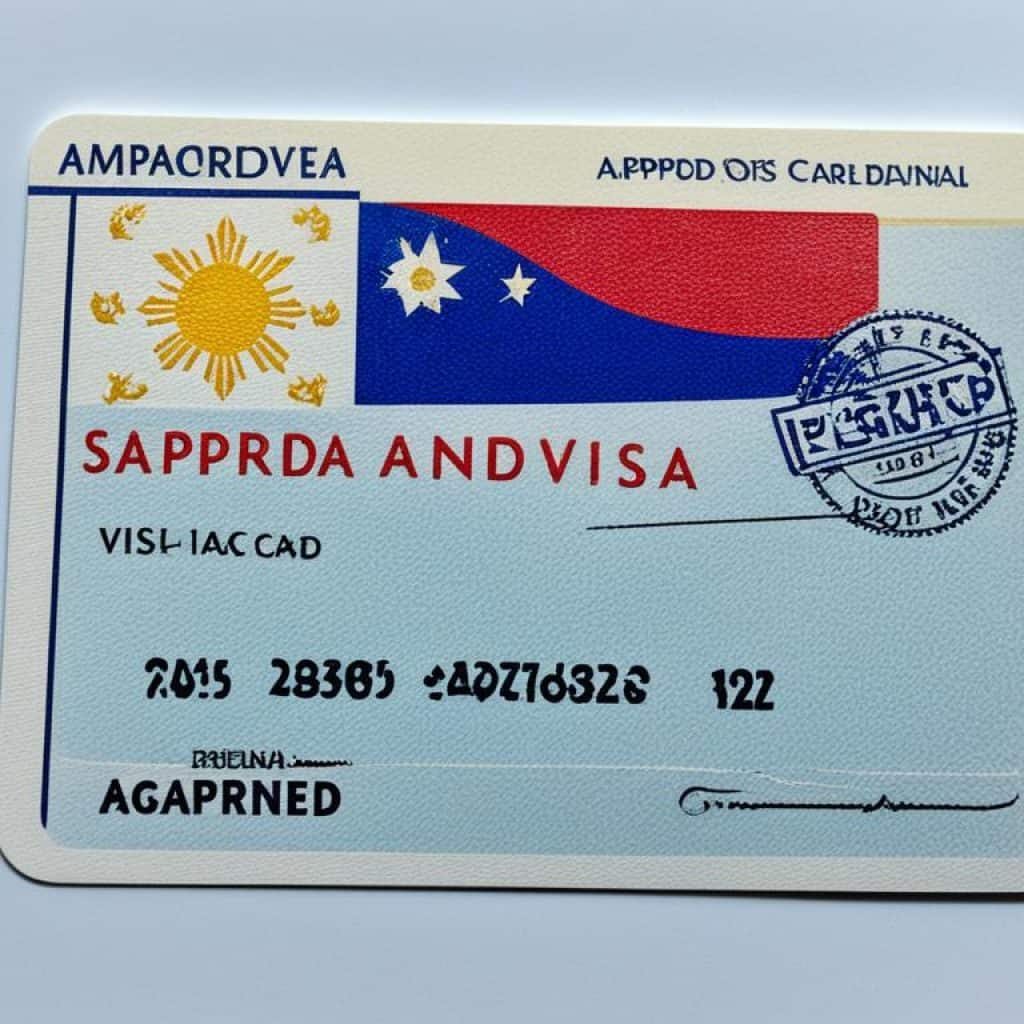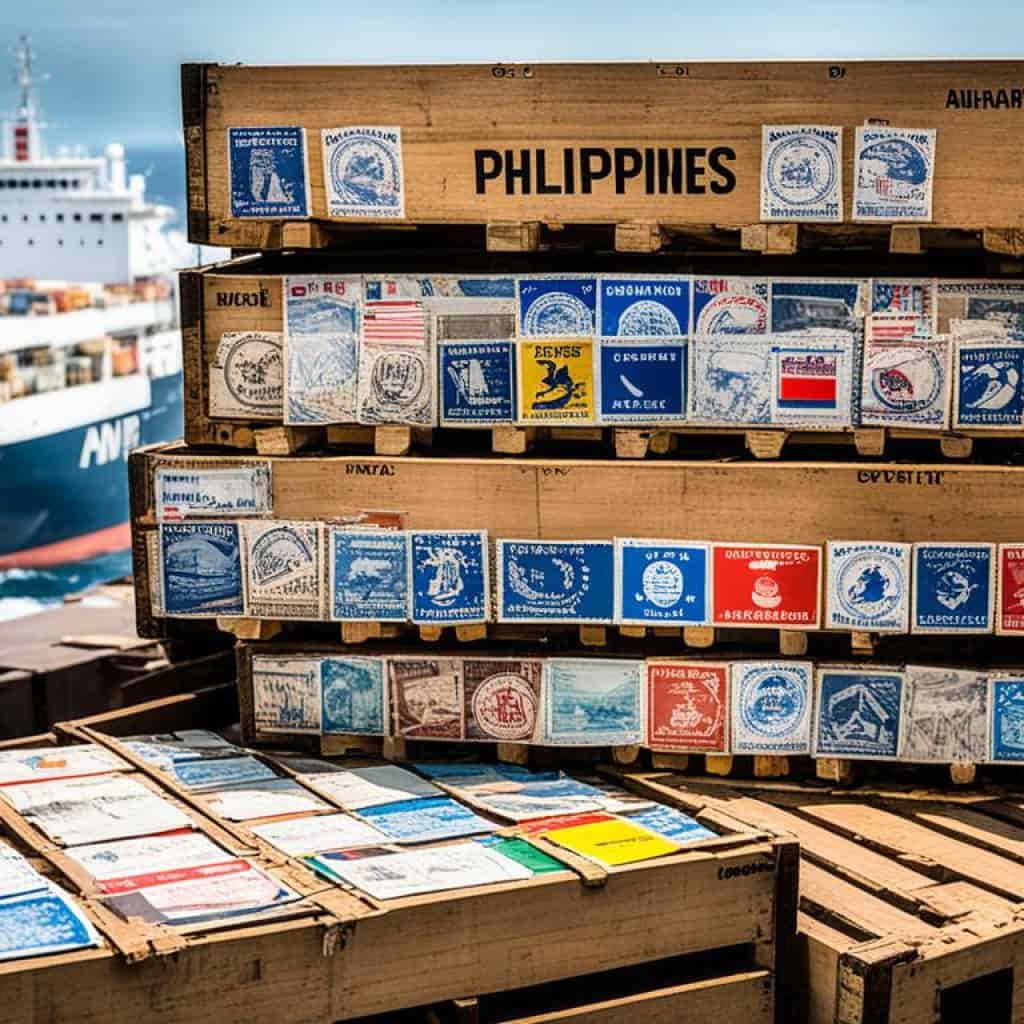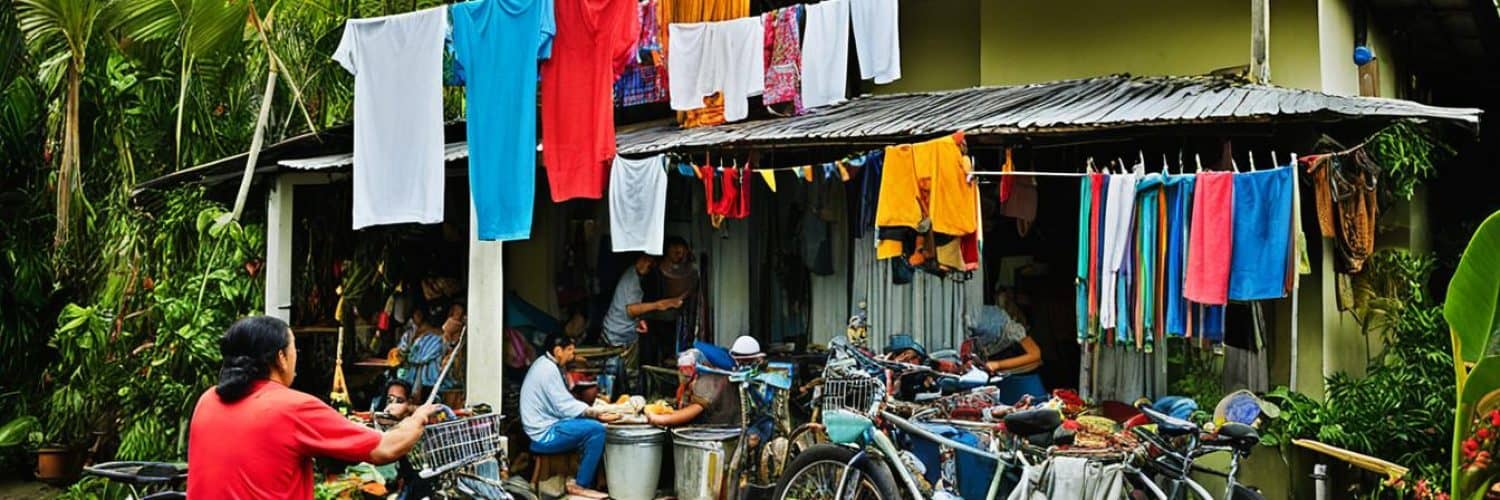Have you ever dreamed of living in a tropical paradise, surrounded by stunning beaches, lush greenery, and a vibrant expat community? The Philippines offers all this and more, making it a sought-after destination for those seeking a new adventure and a high quality of life.
But how do you navigate the visa requirements, cultural nuances, and cost of living to ensure a seamless transition? Is it really possible to live comfortably in the Philippines without breaking the bank?
Join us as we dive into the ins and outs of living in the Philippines, uncovering practical tips and invaluable insights to help you make the most of your expat experience. From visa requirements to the best places to live, from healthcare to transportation, we’ve got you covered.
So, are you ready to embark on a life-changing journey in the Pearl of the Orient? Let’s get started!
Key Takeaways:
- Understanding the visa requirements is crucial before moving to the Philippines.
- Consider the pros and cons of living in the Philippines to make an informed decision.
- Choose the right location that aligns with your lifestyle and preferences.
- Be aware of the cost of living and plan your finances accordingly.
- Immerse yourself in the local culture and make the most of your expat experience.
Quick Facts About the Philippines
The Philippines is a unitary presidential constitutional republic with a population of approximately 111 million. The capital city is Manila and the main languages spoken are Filipino and English. The majority of the population practices Roman Catholicism. The official currency is the Philippine Peso (PHP).
Understanding these basic facts about the Philippines will help expats navigate and adjust to the local lifestyle and culture. From the bustling city of Manila to the serene beaches of the islands, the Philippine lifestyle offers a unique blend of tradition and modernity. The rich Philippine culture is shaped by its history, art, cuisine, and diverse cultural influences.
What Makes Philippine Lifestyle Unique?
- The Warm Filipino Hospitality: Filipinos are known for their warm and hospitable nature, making expats feel welcome and at home.
- Strong Family Values: The Filipino culture places a strong emphasis on family bonds and filial relationships, resulting in close-knit communities and support networks.
- Festivals and Celebrations: The Philippines is famous for its colorful festivals and lively celebrations, showcasing the rich cultural heritage and traditions of different regions.
Embracing the Philippine lifestyle and culture allows expats to fully experience the beauty and charm of this tropical paradise.
“The Philippines offers a unique blend of tradition and modernity, where expats can immerse themselves in a warm and inviting culture while enjoying the natural wonders of the country.” – Traveler’s Guide
| Population | Official Language | Religion | Currency |
|---|---|---|---|
| Approximately 111 million | Filipino and English | Roman Catholicism | Philippine Peso (PHP) |
Visa Requirements for Moving to the Philippines
Planning to relocate to the Philippines? Understanding the visa requirements is crucial for a smooth transition. Whether you aspire to work, study, retire, or reunite with family in the Philippines, obtaining the correct visa is mandatory. Here’s what you need to know:
Short-Term Visa-Free Entry:
Long-Term Visas:
Types of Visas:
The Philippines offers various types of visas depending on the purpose of your stay. These include work visas, study visas, retirement visas, and family reunification visas. Each visa category has its specific requirements and application process.
Work Visa:
For those moving to the Philippines for work, a work visa and Alien Employment Permit (AEP) from the Department of Labor and Employment (DOLE) are required. These permits enable expats to legally work in the country. It is essential to complete the necessary documentation and submit them to your employer for visa and work permit application.
Study Visa:
If you plan to pursue higher education in the Philippines, you will need a long-stay student visa. The educational institution must be accredited by the Bureau of Immigration (BI). Upon arrival, students must report to their chosen institution to secure important documents such as the Alien Certificate of Registration (ACR) and Certificate of Residence for Temporary Students (CRTS) from the Bureau of Immigration.
Retirement Visa:
For individuals looking to retire in the Philippines, the Special Residence Retiree’s Visa (SRRV) program offers a compelling option. Expats aged 35 and above can apply for this visa, which grants permanent residence in the country. Eligibility requirements include maintaining a deposit, investing in real estate, or having a monthly pension.
Family Reunification Visa:
Expats seeking to reunite with their Filipino spouse or dependent children can apply for a long-term spouse visa. This visa allows the visa holder to live permanently in the Philippines and can be re-evaluated for permanent residence status after the initial one-year validity period.
Gaining permanent residency in the Philippines is also possible for foreign nationals married to a Filipino citizen, depending on their country’s immigration reciprocity agreement with the Philippines. Dual citizenship is also an option for natural-born Filipinos who have become naturalized citizens of another country.
Moving to the Philippines for Work
Are you considering moving to the Philippines for work? It’s an exciting opportunity that requires some essential steps in order to make a smooth transition. One of the first things you’ll need to do is obtain a work visa and an Alien Employment Permit (AEP) from the Department of Labor and Employment (DOLE). Without these documents, you won’t be able to legally work in the country.
To start the process, you’ll need to submit the necessary documentation to your employer, who will then assist you in applying for the work visa and AEP. The AEP is initially valid for one to five years and can be renewed, providing you with the opportunity to establish a stable career in the Philippines. It’s important to note that the AEP is specific to your employer, so if you change jobs, you’ll need to apply for a new AEP.
When applying for the work visa and AEP, you’ll be required to provide various documents such as your passport, a valid employment contract, and proof of your qualifications and work experience. Additionally, you may need to undergo a medical examination and secure a clear police clearance certificate. These requirements ensure that you meet the necessary criteria for working in the Philippines.
Once your application is approved, you’ll be granted a work visa that allows you to legally work and reside in the Philippines. It’s important to follow all the rules and regulations set forth by the Philippine authorities to maintain your legal status as an expatriate worker.
Benefits of working in the Philippines
Working in the Philippines offers many benefits for expatriates. Here are a few reasons why it’s an attractive destination for work:
- Opportunities in various industries, including outsourcing, technology, hospitality, and healthcare
- Competitive salaries and lower cost of living compared to other countries
- A diverse and multicultural working environment
- The chance to explore the country’s rich culture, beautiful landscapes, and vibrant cities during your free time
Embracing new opportunities and immersing yourself in the local culture can lead to a fulfilling and rewarding experience while working in the Philippines. So, if you’re ready to make the move, remember to start by securing your work visa and AEP.

| Work Visa Requirements | AEP Requirements |
|---|---|
| Passport | Passport |
| Valid employment contract | Valid employment contract |
| Proof of qualifications and work experience | Proof of qualifications and work experience |
| Medical examination | Medical examination |
| Police clearance certificate | Police clearance certificate |
Moving to the Philippines to Study
For students looking to pursue higher education in the Philippines, obtaining a long-stay student visa is a vital step. In order to qualify, the educational institution must be accredited by the Bureau of Immigration (BI). Once students have arrived in the country, they must report to their chosen institution for further immigration procedures.
- Secure an Alien Certificate of Registration (ACR) from the Bureau of Immigration.
- Obtain a Certificate of Residence for Temporary Students (CRTS) from the Bureau of Immigration.
Completing these steps will ensure that students have the necessary documentation to legally study and reside in the Philippines.
“The Philippines offers a diverse range of educational institutions and programs for international students. By obtaining the appropriate student visa and meeting immigration requirements, students can fully immerse themselves in the rich cultural and academic experiences the country has to offer.” – Jane Smith, International Student Advisor
Suggested Study Programs in the Philippines
| University | Location | Programs Offered |
|---|---|---|
| University of the Philippines | Quezon City |
|
| Ateneo de Manila University | Manila |
|
| De La Salle University | Manila |
|
Moving to the Philippines for Retirement
If you’re considering a peaceful and affordable retirement destination, the Philippines is an excellent choice. The country offers a retirement visa through the Special Residence Retiree’s Visa (SRRV) program, designed to make your retirement dreams a reality. Expats aged 35 and above can apply for this visa, granting them permanent residence in the country, along with a host of benefits.
To obtain a retirement visa, you need to meet certain requirements. These include maintaining a deposit in a Philippine bank, investing in real estate, or having a monthly pension. The SRRV program provides different options tailored to your needs and preferences. Whether you prefer city living or a laid-back beach lifestyle, the Philippines has something for everyone.
Retiring in the Philippines allows you to enjoy a low cost of living without compromising on quality of life. You’ll have access to affordable healthcare, delicious cuisine, and breathtaking natural landscapes. The warm and welcoming Filipino culture makes it easy for expats to integrate and form lasting friendships within the community.
If you’re worried about staying active during retirement, the Philippines has a plethora of activities to keep you engaged. From island-hopping adventures to exploring historical sites, there’s never a dull moment. You can also join social clubs, travel groups, or volunteer organizations to create meaningful connections and contribute to the local community.
Benefits of the Retirement Visa:
- Permanent residence in the Philippines
- Tax-free remittance of your pension
- Multiple-entry privileges with no special clearances required
- Access to world-class healthcare facilities
- Opportunity to invest in the Philippine real estate market
Retirees from the United States have found the Philippines to be an attractive retirement destination due to its warm climate, affordable cost of living, and friendly locals. With the retirement visa, you can enjoy your golden years in paradise, surrounded by stunning beaches, lush mountains, and vibrant cities.
“Retiring in the Philippines allows you to experience a fulfilling and enriching lifestyle. The retirement visa opens the door to a new chapter filled with adventure, relaxation, and exploration.” – Helen Davis, retired expat in the Philippines
| Benefits of Moving to the Philippines for Retirement | Considerations |
|---|---|
| Permanent residence in the Philippines | Adapting to a new culture and way of life |
| Tax-free remittance of your pension | Language barrier for non-English speakers |
| Multiple-entry privileges with no special clearances required | Adjusting to the tropical climate |
| Access to world-class healthcare facilities | Distance from family and friends back home |
Moving to the Philippines for Family Reunification
Are you planning to reunite with your Filipino spouse or dependent children in the Philippines? You may be eligible for a long-term spouse visa, allowing you to live permanently in the country. This visa is available to specific countries and can be the key to reuniting your family.
The initial visa is valid for one year, giving you ample time to settle in and start a new chapter of your lives together. After the first year, you can re-evaluate your situation and apply for permanent residence status, ensuring a stable future for your family in the Philippines.
Applying for a spouse visa requires careful preparation and adherence to the visa requirements. It is recommended to consult with the Embassy or Consulate of the Philippines in your home country for detailed information and guidance on the application process. They can provide valuable insights and assist you in ensuring a smooth transition for your family.
Living in the Philippines with your loved ones can be a fulfilling experience, offering opportunities for growth, adventure, and enriching family bonds. Embrace the vibrant culture, warm hospitality, and unique experiences that the Philippines has to offer, as you create lasting memories with your family.

Benefits of the Spouse Visa for Family Reunification
- Live permanently with your Filipino spouse or dependent children
- Create a stable and secure future for your family in the Philippines
- Enjoy the rich cultural heritage and natural beauty of the country together
- Opportunities for personal growth, employment, and education for your children
- Build and strengthen family bonds in a supportive and welcoming community
“Reuniting with your family in the Philippines through the spouse visa opens up a world of possibilities, allowing you to create a home where love and togetherness thrive.”
Becoming a Permanent Resident in the Philippines
To become a permanent resident, there are certain requirements that need to be fulfilled:
- Residency: Individuals must have lived in the Philippines for a minimum of ten years. This demonstrates a commitment to the country and ensures a strong connection to the local community.
- Property ownership: Acquiring real estate in the Philippines showcases further dedication to the country. It also contributes to the local economy and provides stability for individuals seeking permanent residency.
- Language proficiency: Demonstrating proficiency in Filipino or any local dialect is an important aspect of becoming a permanent resident. It facilitates integration into Filipino society and enhances communication with the local community.
- Good character requirement: Foreign nationals seeking permanent residency must have a clean legal record and uphold high ethical standards. This requirement ensures that individuals will contribute positively to Philippine society.
Furthermore, the Philippines allows for dual citizenship. This means that natural-born Filipinos who have become naturalized citizens of another country can retain their Filipino citizenship. This provides the convenience and benefits of holding citizenship in both countries, allowing individuals to enjoy the privileges and rights that come with being Filipino.
âBecoming a permanent resident in the Philippines offers an incredible opportunity for foreign nationals who have established strong ties to the country. It enables them to live, work, and immerse themselves fully in the rich culture and vibrant society of the Philippines.â
By fulfilling the requirements for permanent residency or considering dual citizenship, individuals can enjoy the benefits of long-term residence in the Philippines and fully embrace the Filipino way of life.
Benefits of Permanent Residency in the Philippines
| Benefits | Explanation |
|---|---|
| Long-term residence | Ability to stay in the Philippines indefinitely, enjoying the country’s culture and lifestyle. |
| Work opportunities | Eligibility to work in the Philippines without the need for additional permits or visas. |
| Educational benefits | Access to local educational institutions and the ability to pursue academic opportunities in the country. |
| Healthcare access | Entitlement to healthcare services and benefits provided to permanent residents in the Philippines. |
| Property ownership | Opportunity to invest in real estate and acquire property in the Philippines. |
| Political rights | Enjoyment of political rights, such as voting in local elections and participating in civic activities. |
By fulfilling the requirements for permanent residency or considering dual citizenship, individuals can enjoy the benefits of long-term residence in the Philippines and fully embrace the Filipino way of life.
Pros and Cons of Moving to the Philippines
Moving to the Philippines can be an exciting adventure, offering expats a unique expat life experience in a country known for its natural beauty and welcoming locals. However, like any major life decision, it’s important to consider the pros and cons before making the move.
Pros of Moving to the Philippines
- t
- Affordable Cost of Living: One of the main advantages of living in the Philippines is the affordable cost of living. From housing to food and transportation, expats can enjoy a comfortable lifestyle without breaking the bank.
- Beautiful Landscapes: The Philippines is known for its stunning landscapes, including pristine beaches, lush mountains, and vibrant coral reefs. Expats can explore these natural wonders and indulge in outdoor activities such as snorkeling, hiking, and island hopping.
- Networking Opportunities: The expat community in the Philippines is diverse and thriving. This provides ample opportunities for networking, making new friends, and building a supportive social circle.
Cons of Moving to the Philippines
- t
- High Crime Rates: While the majority of areas in the Philippines are safe for expats, some cities and regions have higher crime rates. It’s important for expats to be aware of their surroundings and take necessary precautions to ensure their safety.
- Natural Disasters: The Philippines is prone to natural disasters such as typhoons, earthquakes, and volcanic eruptions. Expats should familiarize themselves with emergency procedures and have a plan in place to ensure their safety during such events.
- Crowded Cities: Urban areas in the Philippines can be crowded and congested, leading to traffic issues and limited personal space. This can require some adjustment, especially for those accustomed to a more laid-back lifestyle.
- Challenging Weather Conditions: The Philippines has a tropical climate, with hot and humid weather throughout the year. Expats may need time to adjust to the heat and humidity, as well as the occasional heavy rainfall.
Despite these challenges, many expats find the pros of living in the Philippines far outweigh the cons. By considering these factors and making an informed decision, expats can embrace the expat life and adjust to their new home in the Philippines.
Bringing Belongings to the Philippines
When moving to the Philippines, expats have the option to bring their belongings with them by air, land, or boat. Shipping companies specialized in international moving can assist with the logistics of transporting personal items to the Philippines. However, it’s important to be aware of the necessary documents and restrictions when shipping belongings.
Required Documentation
Before shipping your belongings to the Philippines, make sure you have the following documents on hand:
- A valid passport
- Appropriate visa and residence permit
- Inventory of shipped items
These documents are necessary to comply with customs regulations and ensure a smooth customs clearance process.
Prohibited Items
While shipping your belongings to the Philippines, it’s crucial to note that certain items are prohibited from being brought into the country. These include:
- Firearms and explosives
- Narcotics and illegal drugs
- Obscene or immoral materials
It’s essential to familiarize yourself with the complete list of prohibited items before packing and shipping your belongings to avoid any legal complications.
“Shipping belongings to the Philippines allows expats to create a comfortable and familiar living space in their new home. By following the necessary documentation requirements and being aware of the prohibited items, expats can ensure a hassle-free process of bringing their cherished possessions to the Philippines.”

| Advantages of Shipping Belongings | Disadvantages of Shipping Belongings |
|---|---|
| 1. Create a familiar living environment | 1. Cost implications |
| 2. Preserve sentimental value | 2. Longer shipping time |
| 3. Cost-effective for bulky items | 3. Customs regulations and duties |
Moving Pets to the Philippines
Bringing your furry friends along when moving to the Philippines is possible, but it requires careful planning and adherence to the pet import requirements set by the Bureau of Animal Industry. To ensure a smooth transition for your pets, here’s what you need to know:
1. Obtain an Import Permit
An import permit is a prerequisite for bringing pets into the Philippines. You can apply for this permit from the Bureau of Animal Industry. Make sure to provide all necessary documents and information, including your pet’s health records, microchip details, and proof of vaccinations.
2. Provide a Health Certificate
Prior to travel, your pets must undergo a veterinary health examination and obtain a health certificate. This certificate should state that your pet is healthy and free from contagious diseases. Ensure that the certificate is issued within a specific timeframe as specified by the Bureau of Animal Industry.
3. Ensure Vaccinations are Up to Date
All pets being imported to the Philippines must have up-to-date vaccinations, including rabies. Make sure to follow the vaccination requirements outlined by the Bureau of Animal Industry. Keeping your pets vaccinated not only ensures their safety but also protects the local population from potential diseases.
4. Follow Quarantine Procedures
Depending on the country of origin and the health status of your pets, they may need to undergo a mandatory quarantine period upon arrival in the Philippines. The duration of quarantine may vary, so it’s essential to inquire about the specific requirements and make the necessary arrangements in advance.
5. Prepare for Travel
When traveling with your pets, ensure their comfort and safety throughout the journey. Use suitable carriers that provide adequate space for them to stand, turn, and lie down. Provide food, water, and any necessary medications during transit. It’s also advisable to consult your veterinarian for additional tips on how to make the journey as stress-free as possible.
By following these pet import requirements, you can bring your beloved pets with you to the Philippines and ensure their well-being during the transition. Make sure to comply with all regulations to avoid any unnecessary delays or complications.
Pet Import Requirements
| Requirement | Description |
|---|---|
| Import Permit | Obtain an import permit from the Bureau of Animal Industry. |
| Health Certificate | Provide a health certificate stating your pet’s good health and freedom from contagious diseases. |
| Vaccinations | Ensure that your pet’s vaccinations, including rabies, are up to date. |
| Quarantine | Follow any mandatory quarantine procedures based on the country of origin and health status of your pet. |
Best Places to Live in the Philippines
When considering where to live in the Philippines, there are several popular options that offer unique attractions, amenities, and vibrant communities. Whether you prefer the excitement of a bustling city or the tranquility of natural landscapes, the Philippines has something for everyone. Here are a few of the best places to live in the country:
1. Manila
Manila, the capital city of the Philippines, is a bustling metropolis that offers a vibrant lifestyle and a multitude of employment opportunities. Known for its rich history, diverse culture, and lively entertainment scene, Manila offers a dynamic urban experience. With its numerous shopping malls, restaurants, and vibrant nightlife, there is always something to do in this cosmopolitan city.
2. Makati
If you’re looking for a place that combines luxury amenities with a thriving expat community, Makati is an excellent choice. Known as the financial hub of the Philippines, Makati offers upscale shopping centers, world-class restaurants, and high-end residential areas. The city also boasts a well-developed transportation system, making it convenient to navigate. Its central location makes it an ideal base for exploring other parts of the country.
3. Baguio
Nestled in the mountains of Northern Luzon, Baguio is known as the “Summer Capital of the Philippines” due to its cool climate. With its picturesque landscapes, scenic views, and charming local markets, Baguio attracts both tourists and expats seeking a peaceful retreat. The city also offers a thriving arts and culture scene, with numerous art galleries and music festivals throughout the year.
4. Tagaytay
Located just a short drive from Manila, Tagaytay is a popular destination for those looking to escape the city’s hustle and bustle. Known for its stunning views of Taal Lake and Volcano, Tagaytay offers a cool climate and a relaxed atmosphere. The city is also home to numerous restaurants and cafes offering delicious local cuisine, as well as a variety of recreational activities such as horseback riding and boating.
5. Davao
Situated in the southern part of the Philippines, Davao is a vibrant city with a thriving economy and a laid-back lifestyle. Known for its beautiful beaches, lush forests, and diverse wildlife, Davao offers outdoor enthusiasts plenty of opportunities for adventure. The city also boasts a low crime rate, making it a safe and peaceful place to live.
These are just a few of the best places to live in the Philippines, each with its own unique charm and attractions. Whether you prefer the excitement of city life or the tranquility of nature, the Philippines has a place that suits your lifestyle.
Public Transport in the Philippines
When it comes to public transport in the Philippines, convenience and crowdedness often go hand in hand. During peak hours, the transportation system can become quite hectic. However, there are several transportation options available to help you navigate the archipelago.
- Taxis: Taxis are a popular choice for many expats due to their convenience and metered fares. You can easily hail a taxi on the street, or use ride-hailing apps for added convenience.
- National Railway Service: The national railway service covers most of the country, making train travel a viable option for long-distance journeys. Trains offer a comfortable and scenic way to explore different regions of the Philippines.
- Buses: Buses are a common mode of transportation within cities and between provinces. They offer affordable fares and access to various destinations.
- Jeepneys: Jeepneys, originally converted from World War II jeeps, are a unique and iconic mode of transport in the Philippines. They are typically used for short-distance travel within cities.
- Boats and Ferries: Given its numerous islands, the Philippines relies heavily on boats and ferries for inter-island travel. This mode of transport is common in coastal areas and provides an opportunity to explore different islands and enjoy the stunning ocean views.
While public transport can be crowded at times, finding the right options that suit your needs and preferences can ensure a smooth and convenient travel experience throughout the Philippines.
Cost of Living in the Philippines
The cost of living in the Philippines is generally lower compared to the US. Everyday expenses such as meals, groceries, and transportation are more affordable. Rent and property prices are also significantly cheaper. However, it’s important to consider that costs may vary depending on the location, lifestyle, and personal preferences.
Healthcare and Education in the Philippines
When moving to the Philippines, it’s important to consider the healthcare system and education opportunities available in the country. Understanding these aspects can greatly contribute to a successful transition and a fulfilling expat life.
Healthcare in the Philippines
The healthcare system in the Philippines offers both public and private options. While public healthcare is available, many expats prefer private healthcare due to its quality facilities and services. To ensure access to the best healthcare, it’s crucial to have comprehensive health insurance coverage.
Private hospitals in the Philippines are well-equipped with modern technology and highly skilled medical professionals. Manila, the capital city, is known for its world-class medical facilities. In addition to hospitals, there are specialized clinics and healthcare centers that cater to specific medical needs.
Education in the Philippines
The education system in the Philippines is based on the American model, providing a familiar structure for expat families. There is a mix of public and private schools, as well as a wide range of international schools that offer various curricula, including American, British, and International Baccalaureate (IB) programs.
Public schools in the Philippines are funded by the government and offer free education. However, they may have limited resources and class sizes can be large. Private schools, on the other hand, often provide a higher standard of education and smaller class sizes, but they come with tuition fees.
International schools offer an excellent option for expat families, as they provide a globally recognized education and usually have a diverse student body. These schools often follow international curricula and offer a wide range of extracurricular activities to enhance the learning experience.
| Healthcare System | Education System |
|---|---|
| Public and Private options | Mix of Public and Private schools |
| Private healthcare preferred by expats | International schools offer globally recognized education |
| Comprehensive health insurance recommended | Public schools are free, but resources may be limited |
| Modern facilities and skilled medical professionals | Private schools provide higher standards, but require tuition fees |
Overall, expats in the Philippines have access to quality healthcare facilities and a diverse range of education options. Considering healthcare and education priorities will help ensure a comfortable and enriching experience for individuals and families alike.
Conclusion
Moving to the Philippines offers expats a vibrant expat community, natural beauty, and an affordable cost of living. The country’s 7,500 islands, warm climate, and stunning beaches make it an ideal destination for those seeking a tropical paradise. However, before making the move, it’s crucial to understand the visa requirements, cultural aspects, and cost of living to ensure a successful and enjoyable experience.
By carefully considering the pros and cons, prospective expats can make an informed decision about living in the Philippines. It’s important to choose the right location based on personal preferences and lifestyle. Whether it’s the bustling capital city of Manila, the thriving expat community in Makati, or the peaceful mountain retreats of Baguio and Tagaytay, there is a place to suit every expat’s needs.
Proper planning is key to a smooth transition. Familiarize yourself with the visa requirements and application process, whether moving for work, study, retirement, or family reunification. Understanding the local culture and adapting to the Filipino way of life will help expats settle in more easily and integrate into their new community.
With its natural beauty, friendly locals, and affordable cost of living, the Philippines offers expats a unique and rewarding experience. By embracing the challenges and opportunities that come with living abroad, expats can enjoy a fulfilling and enriching expat life in this stunning Southeast Asian country.
FAQ
What are some quick facts about the Philippines?
What are the visa requirements for moving to the Philippines?
Everyone planning to move to the Philippines will need a visa. Long-term visas are required for those wishing to stay for an extended period. Some countries have visa-free entry for a short period, but for longer stays, a proper visa is necessary. Visas can be obtained at the Embassy or Consulate of the Philippines in the home country or at the Bureau of Immigration (BI) in the Philippines.
How can I move to the Philippines for work?
Moving to the Philippines for work requires obtaining a work visa and an Alien Employment Permit (AEP) from the Department of Labor and Employment (DOLE). The AEP is initially valid for one to five years and can be renewed. Expats need to submit the necessary documentation to their employer for the visa and work permit application.
What do I need to know about moving to the Philippines to study?
Students planning to pursue higher education in the Philippines must apply for a long-stay student visa. The educational institution must be accredited by the Bureau of Immigration (BI). Upon arrival, students need to report to their chosen institution to secure the Alien Certificate of Registration (ACR) and Certificate of Residence for Temporary Students (CRTS) from the Bureau of Immigration.
How can I retire in the Philippines?
The Philippines offers a retirement visa through the Special Residence Retiree’s Visa (SRRV) program. Expats aged 35 and above can apply for this visa, which grants permanent residence in the country. Requirements include maintaining a deposit, investing in real estate, or having a monthly pension. The SRRV program provides options for retirees to choose from based on their needs and preferences.
How can I move to the Philippines to reunite with my family?
Expats intending to reunite with their Filipino spouse or dependent children can apply for a long-term spouse visa. This visa is available to specific countries and allows the visa holder to live permanently in the Philippines. The initial visa is valid for one year and can be re-evaluated for permanent residence status.
How can I become a permanent resident in the Philippines?
Foreign nationals who are married to a Filipino citizen and whose country has an immigration reciprocity agreement with the Philippines can become permanent residents. To gain Filipino citizenship, individuals must have lived in the country for ten years, acquire real estate, demonstrate language proficiency, and fulfill a good character requirement. The Philippines also allows for dual citizenship for natural-born Filipinos who have become naturalized citizens of another country.
What are the pros and cons of moving to the Philippines?
Moving to the Philippines offers advantages such as an affordable cost of living, beautiful landscapes, and networking opportunities. However, it also has downsides, including high crime rates, natural disasters, crowded cities, and challenging weather conditions. Prospective expats should weigh these factors to make an informed decision about living in the Philippines.
How can I bring my belongings to the Philippines?
Expats can bring their belongings to the Philippines by air, land, or boat. Shipping companies can assist with the logistics, and certain documents, such as a valid passport, visa, residence permit, and inventory of shipped items, are required. However, some items, such as firearms, narcotics, and illegal drugs, are prohibited from being shipped to the Philippines.
Can I bring my pets to the Philippines?
Expats can bring their pets to the Philippines, but certain requirements must be met, including obtaining an import permit, providing a health certificate, and ensuring vaccinations are up to date. The Bureau of Animal Industry regulates these requirements, and it’s essential to comply with their guidelines to ensure a smooth transition for pets.
Where are the best places to live in the Philippines?
When considering where to live in the Philippines, popular options include Manila, the capital city known for its vibrant lifestyle and employment opportunities, and Makati, a financial hub with luxury amenities and a thriving expat community. Other notable places include Baguio, Tagaytay, and Davao, each offering unique attractions and a range of amenities.
What are the transportation options in the Philippines?
Public transport in the Philippines can be crowded, especially during peak times. Many expats choose to drive or use taxis for convenience. Taxis are metered, and ride-hailing apps are also available. The national railway service covers most of the country, and long-distance train travel is becoming popular. Buses, jeepneys (converted WWII jeeps), boats, and ferries are other means of transportation within the archipelago.
How much does it cost to live in the Philippines?
The cost of living in the Philippines is generally lower compared to the US. Everyday expenses such as meals, groceries, and transportation are more affordable. Rent and property prices are also significantly cheaper. However, it’s important to consider that costs may vary depending on the location, lifestyle, and personal preferences.
What is the healthcare and education system like in the Philippines?
The healthcare system in the Philippines has both public and private options, with private healthcare generally preferred by expats. It’s important to have comprehensive health insurance coverage to access quality facilities and services. The education system in the Philippines is based on the American model, with a mix of public and private schools and a wide range of international schools.


















Add comment